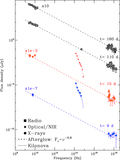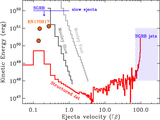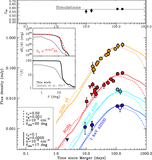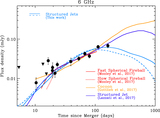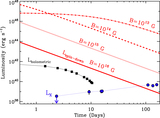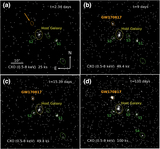Image Details
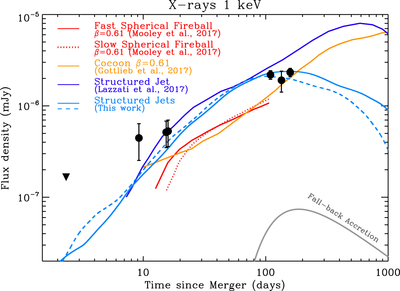
Caption: Figure 6.
Comparison of successful models at 1 keV. Same color coding as Figure 5. For the spherical models by Mooley et al. (2017) and Gottlieb et al. (2017) we adopt the best-fitting spectral index β = 0.61 from Mooley et al. (2017) to convert their best-fitting radio models into X-rays. These models underpredict the observed X-ray flux. This is a clear indication of a flatter spectral index as we find in Section 2.3. Using βXR ∼ 0.58 would bring the models to consistency with the observations. The model by Gottlieb et al. (2017) and the structured jet model by Lazzati et al. (2017c) predict a continued rise of the X-ray emission until very late times, and are disfavored by the latest observations at ∼150 days, which suggest instead a flattening of the X-ray light-curve. Thick gray line: expected flux from fall-back accretion onto the remnant black hole ﹩{F}_{\mathrm{fb}}^{\mathrm{obs}}={F}_{\mathrm{fb}}{e}^{-{\tau }_{X}}﹩ for the fiducial parameters of Section 3.4.
Copyright and Terms & Conditions
© 2018. The American Astronomical Society. All rights reserved.


